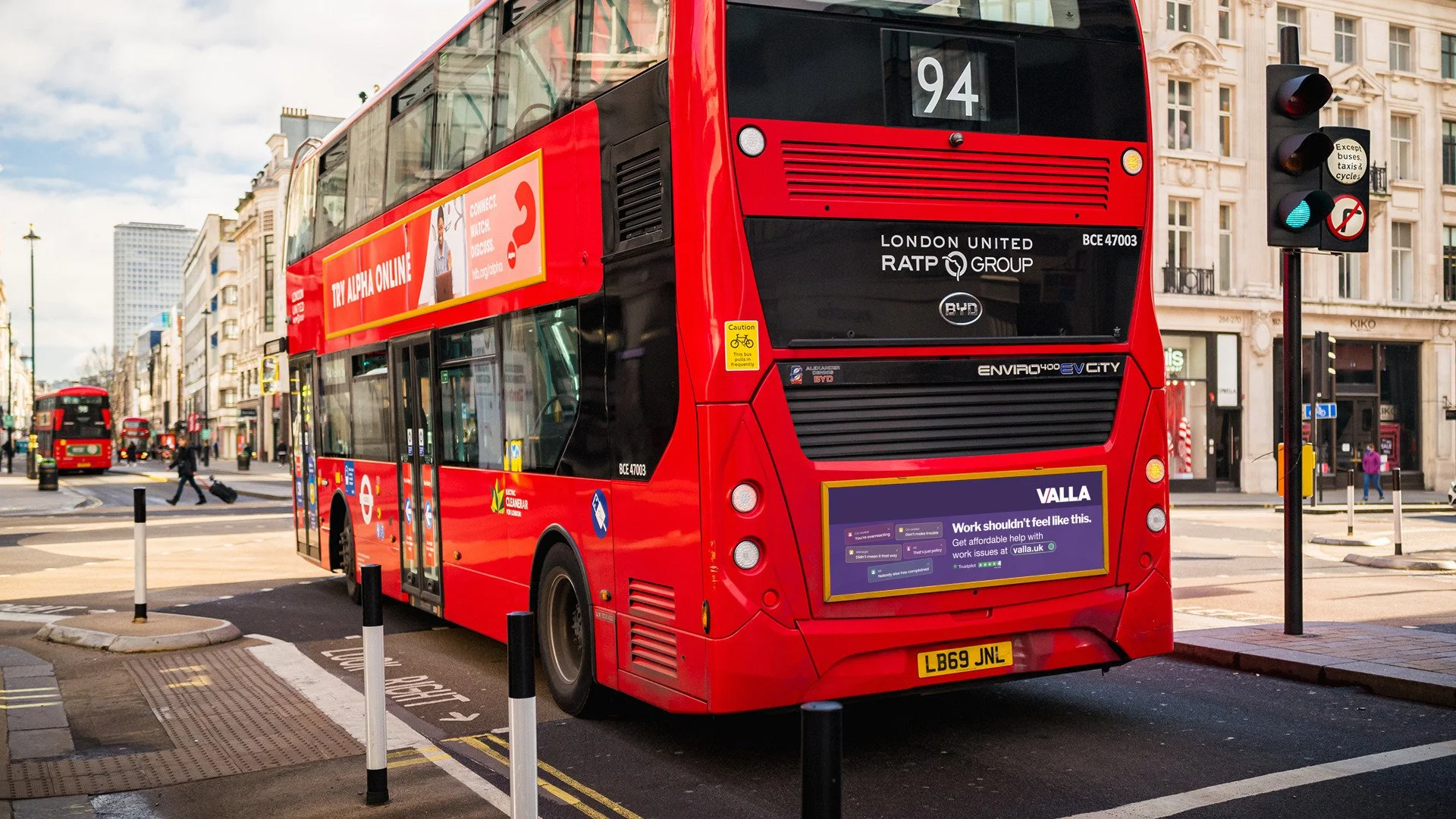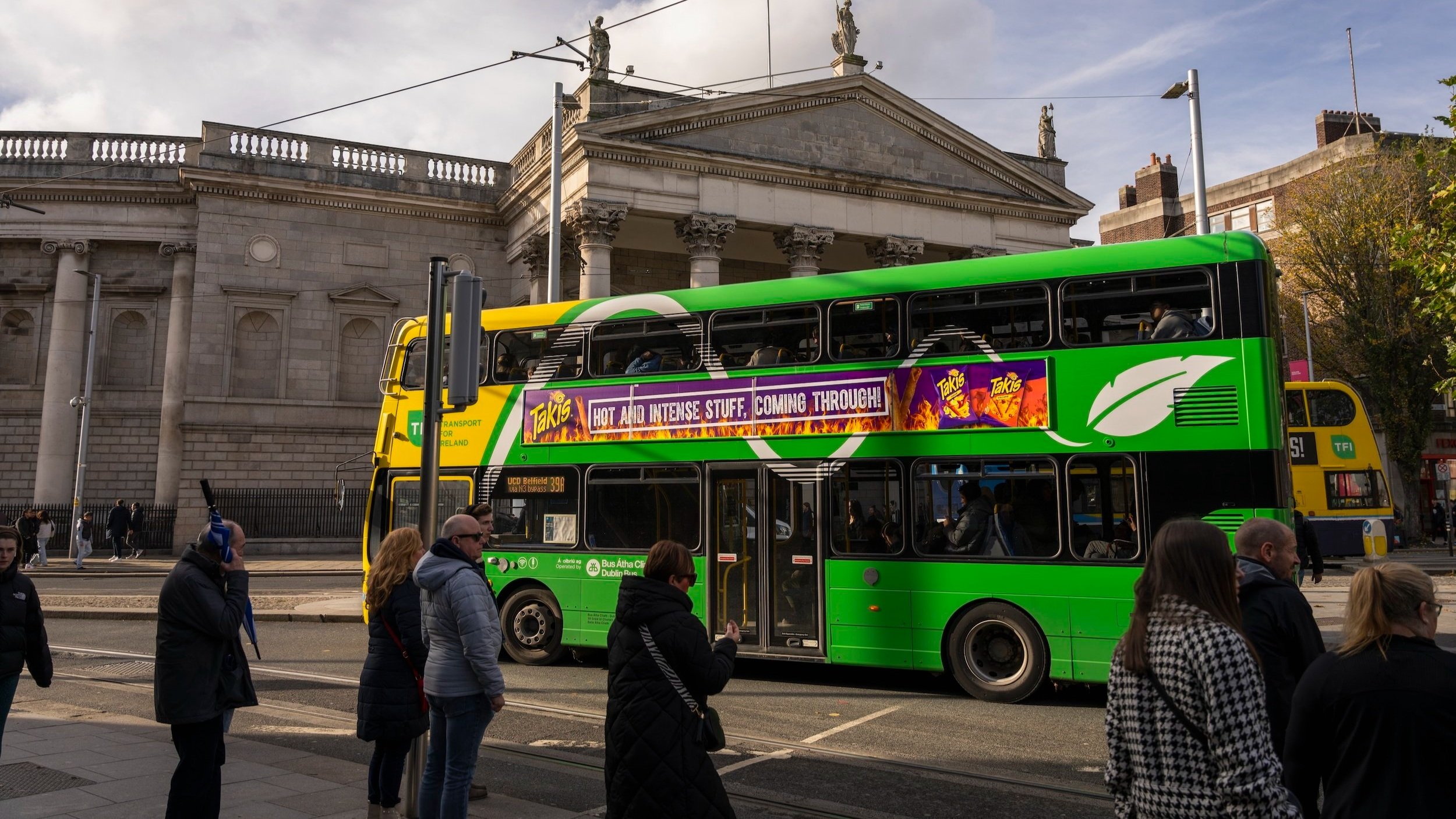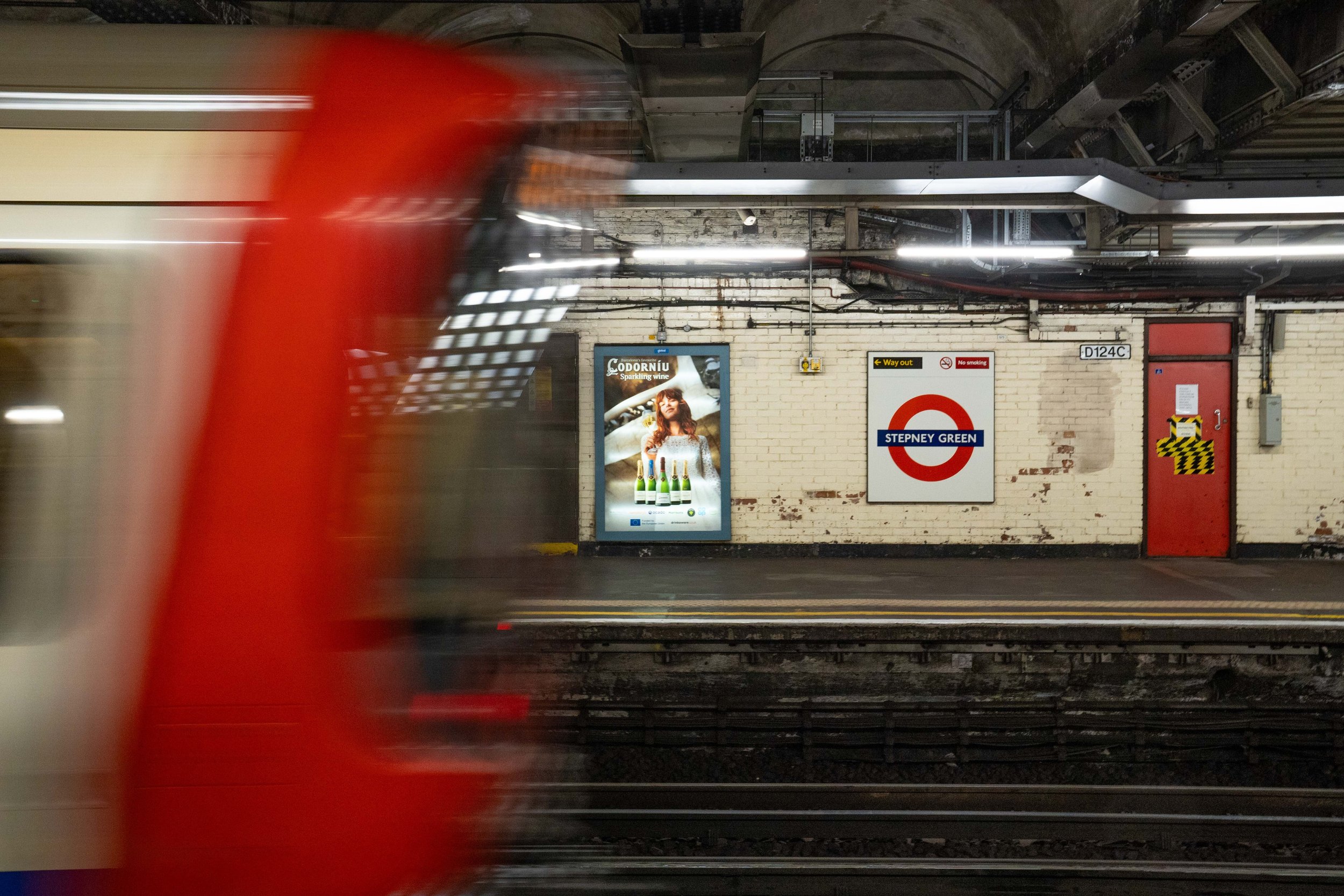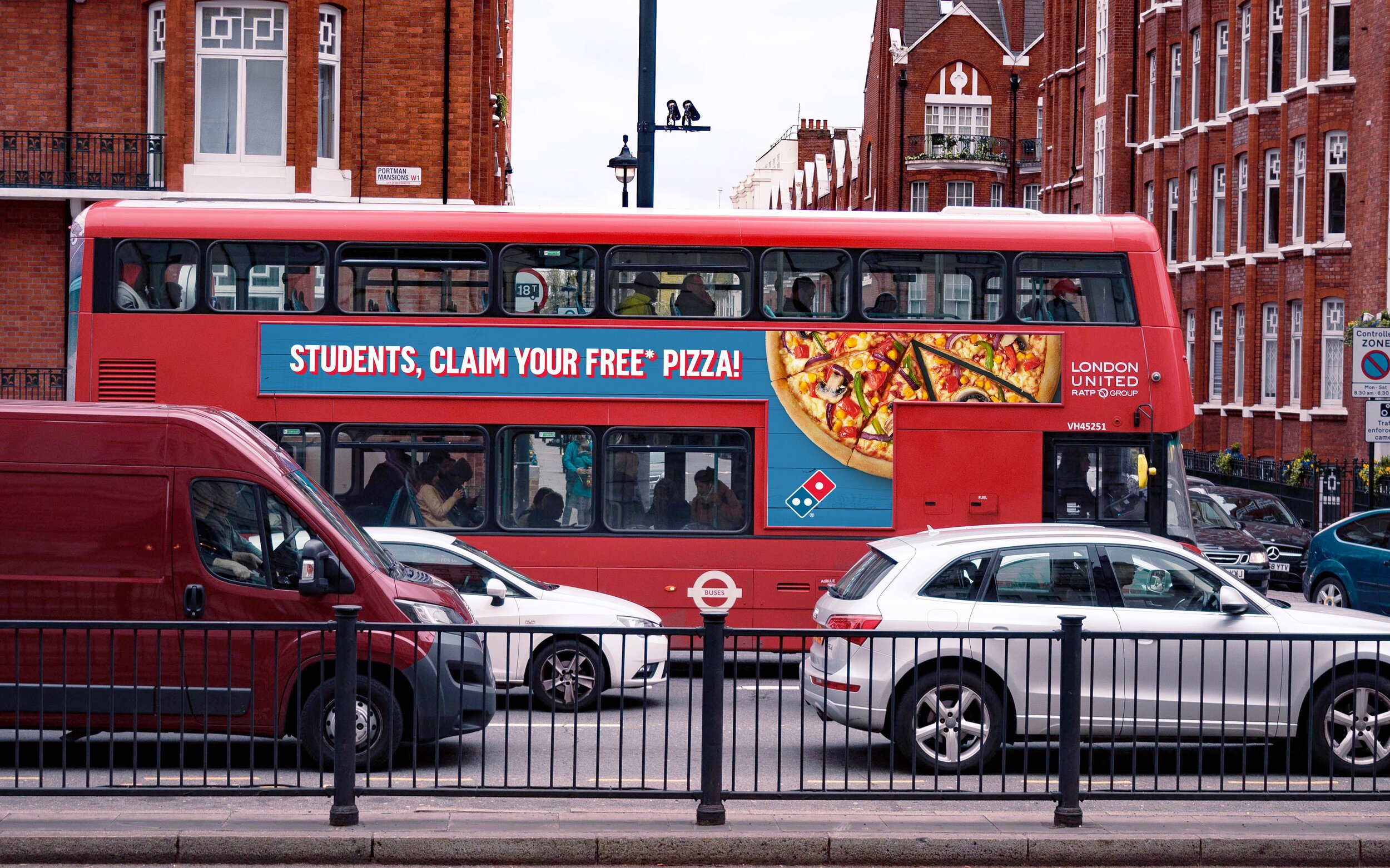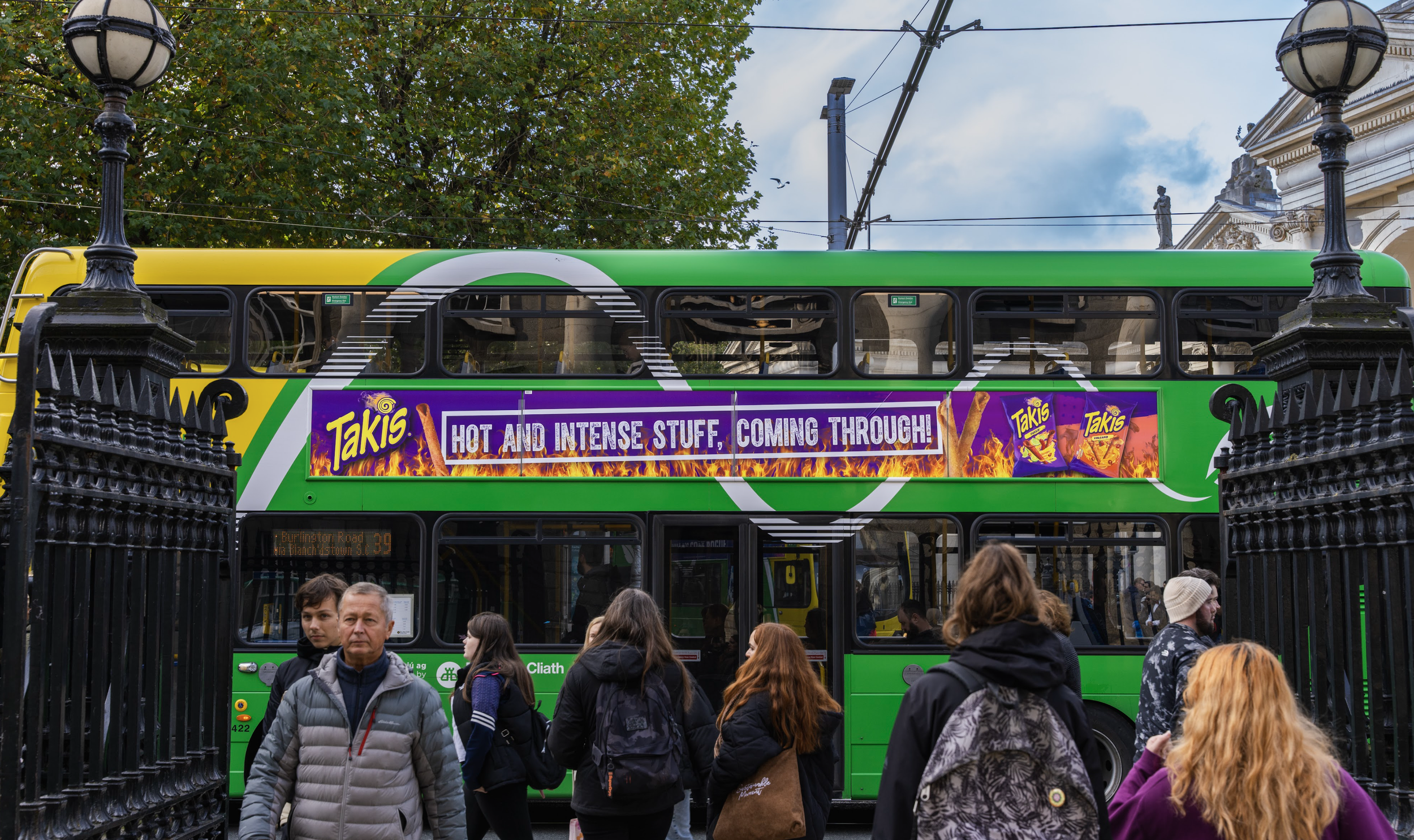How effective are ads on buses and bus shelters?
Key Takeaways
Bus and bus shelter advertising delivers mass exposure and strong recall. With 30 million people seeing bus ads weekly and shelters placed in high-footfall areas, both formats reach diverse audiences locally, regionally and nationwide.
These formats combine visibility with frequency. Mobile buses act as moving billboards, while shelters capture attention during dwell times. High recall rates – with 86% of passengers remembering bus ads – highlight their effectiveness.
Digital bus shelter displays add precision, enabling time-based targeting and interactive features. Used alongside static formats, they strengthen messaging, enhance engagement and create smarter, more impactful campaigns.
Bus and bus shelter advertising is the perfect opportunity for your business to reach millions of people outside of the home. Both have the capacity to target audiences locally, regionally and nationwide with high frequency as well as offer a variety of other benefits for your brand.
Whether you’re looking to make an impact with this type of advertising or you’re curious as to how effective it really is, this article will tell you everything you need to know.
What is Bus Advertising?
Bus advertising is the use of buses to promote a product, service, event and more. The content is typically static but creative design concepts and ideas can make them highly engaging. The mobility and size of buses make them an effective out-of-home advertising format that can reach hundreds and thousands of potential customers on a repetitive basis, helping to strengthen brand messaging.
Bus Shelter Advertising with a Vinyl Wrap.
What is Bus Shelter Advertising?
Bus shelter advertising is the use of bus stops to display advertising messages. The advertisements are typically displayed on static (Adshel) or digital (Adshel Live) panels with static displays remaining unchanged for the duration of the campaign and digital displays rotating between different advertising messages.
Is Bus Advertising Effective?
A bus is essentially a mobile billboard and because of its bright vivid colours, they’re highly visible. As a bus moves through towns, cities and even rural roads, your message is being advertised far and wide to mass amounts of people. In fact, 30 million people have seen advertising on a bus in the last week and 90% of people live within five minutes of a bus route (1).
Buses have the potential to reach a large portion of the population making them an effective choice for local, regional and even nationwide campaigns. For instance, buses that move through densely populated areas can target individuals of all ages, genders and socio-economic backgrounds whereas a local bus network may have a slightly more targeted approach when it comes to advertising. It truly is a powerful medium for achieving broad visibility and brand exposure as well as targeted engagement within specific local communities.
Buses are not just advertising tools, of course! They’re essential modes of transportation first and foremost, with 74% of people agreeing they’re an important part of communities. (2) This gives anyone advertising on buses a positive relationship with the local population. When taking a look at London buses in particular, 73% of commuters actually prefer buses with advertising (3) indicating that the majority of London commuters have a favourable view of bus advertising and it’s well-received within the community.
Bus advertising has a high response rate with 80% of consumers responding to an advert in or on a bus indicating that bus advertising is not only viewed by consumers but they’re engaging with it. What’s more, 86% of bus passengers can readily recall bus advertising that they’ve seen, making it a highly memorable advertising format. (4)
Another example of Bus Shelter or Bus Stop Advertising.
Types of Bus Advertising
Bus advertising offers a variety of formats that are each effective in their own right:
Bus Streetliners are 10ft or 13ft long posters that are available on single-deck buses. Well-positioned at eye level, Streetliners capture the attention of a balanced mix of both pedestrian and vehicular audiences.
Bus Supersides are 20ft long posters that are available on double-decker buses. This highly trusted format is positioned above the cluttered streets and drives pedestrian attention to deliver your advertising message.
The bus T-side is the most premium traditional bus advertising format and an immediately recognisable one on the high street. This format cuts through and rises above the urban clutter to maximise exposure to crowds and vehicles.
Bus Interior Panels
These are ideal for direct response or call-to-action driven messages that capture the high dwell time and attention of bus passengers. Bus interior panels also offer the benefit of high recall due to the repeated brand exposure to daily commuters.
This format of bus advertising speaks directly to drivers. Bus Rear Advertising, also known as lower rears, are ideal for brands and marketers who want to target motorists, leveraging on the potential high dwell times.
Is Bus Shelter Advertising Effective?
There are a number of ways in which bus shelter advertising is effective. Bus shelter ads come in two formats: Adshel (static) and Adshel Live (digital). Adshel Live is the UK’s largest digital out-of-home network, reaching millions of consumers weekly meaning they’re highly accessible to most business types.
Like bus advertising, bus shelter advertising has a high reach. In the financial year ending 2022, 1.4 billion passenger journeys were made by local buses in England (5) and when people are boarding or waiting for a bus, they’ll be exposed to bus shelter adverts indicating the potential to reach a substantial audience. Furthermore, bus shelters are typically placed in locations with high foot traffic, meaning they can reach pedestrians and motorists as well as bus passengers.
The development of digital advertising has meant that advertisers can effectively engage audiences as well as reach them efficiently. Digital displays can include dynamic content that leaves a lasting impression and includes interactive features that encourage audiences to get involved. On top of this, advertisers can target specific demographics at specific times of the day, which is beneficial due to the variety of demographics that use buses such as commuters, students or tourists.
An example of this would be a fast-food restaurant using digital bus shelter displays to place advertisements for a juicy burger around 5 pm when most workers finish for the day and head to the bus stop to catch a bus home. This way the fast-food restaurant is targeting hungry workers that may be looking for something quick and easy for dinner.
This is a highly targeted approach that’s not necessarily achievable with static advertisements. Nevertheless, when used strategically, Adshel and Adshel Live complement one another by strengthening brand messaging and delivering smarter targeting.
Essential Tips To Remember
To get the most out of your bus shelter and bus advertising campaign, make sure to follow these essential tips:
Consider the placement of your advert to ensure it stands out and reaches the right audience. Do you need to be in a high-income area or somewhere with high foot traffic? Conduct some research to find out where your audience frequents to effectively reach them.
Use eye-catching imagery and bold colours to capture the attention of your audience. High-quality photography and vivid colours will enhance the visual appeal of your advertisement, making it more likely to stand out.
Make your advertising easily digestible so that messaging can be exposed to your audience as quickly as possible. Whether you’re targeting pedestrians, motorists, commuters or all three, you’ll need to think about the fonts, wording and overall messaging that communicates effectively and efficiently.
How do I get started with Bus Advertising?
Bus shelters and bus advertising are effective ways of reaching mass amounts of diverse groups of people. Both bus shelter and bus advertising capitalise on high-dwell times ensuring your brand receives prolonged exposure and visibility. There are a variety of different formats to choose from, including digital adverts, catering to all types of businesses and their unique campaign objectives.
Navigating bus advertising and buying can be complex. If you’re considering employing it as part of your advertising campaign, we can help by providing a tailored plan that suits your business needs. Contact us today to find out more.
FAQs
Is bus shelter advertising effective?
Bus shelter advertising is a popular and effective advertising format for businesses and brands looking to capitalise on the dwell time that bus passengers experience before catching their bus and advertise their products or services to this captive audience.
How effective is bus advertising?
Bus advertising is effective at being highly visible and providing high-frequency exposure and reach - making it an effective tool for building brand awareness and ensuring your brand remains on top of mind.
References
To learn more about advertising on buses, contact us today.




